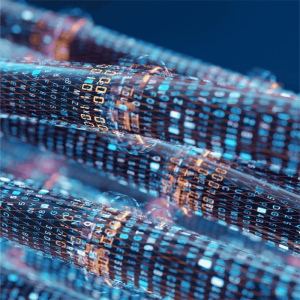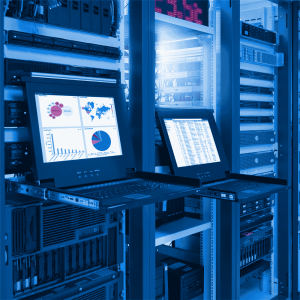Fiber Optic Connector Types: The Right Choices to Optimize Your Network Performance
Fiber optic technology has become a technology that forms the basis of modern communications infrastructure, from data centers to telecommunications networks. Fiber optic cables provide high-speed data transmission and long-distance data transfer without signal loss, while fiber optic connectors enable these cables to be used efficiently in network infrastructure. Choosing the right fiber optic connector is a critical step in optimizing network performance and ensuring connection reliability. So, what are the types of fiber optic connectors and in which cases should which one be preferred?
What is a Fiber Optic Connector?
Fiber optic connectors are components that allow two fiber optic cables to be connected to each other. These connectors require precise alignment to ensure lossless transmission of optical signals. Various types of connectors have been developed for different fiber optic applications, and each one addresses specific needs.
Commonly Used Fiber Optic Connector Types
- SC (Subscriber Connector) Connector:
Description: SC connectors are a widely used connector type known for their square design. They are easy to use and can be snapped into place and removed with a spring-loaded mechanism.
Advantages: SC connectors offer high reliability and low cost. They are also ideal for long-distance connections.
Areas of Use: Data centers, telecommunications, CATV and wide area networks.
2. LC (Lucent Connector) Connector:
Description: LC connectors stand out with their small form factor (SFF). Thanks to their smaller dimensions, they are preferred to provide higher density connections.
Advantages: LC connectors are ideal for high-density applications and save space. They are generally used in data centers.
Areas of Use: Data centers, local area networks (LAN), fiber optic backbone cabling.
3. MPO/MTP (Multi-Fiber Push-On/Pull-Off) Connector:
Description: MPO/MTP connectors are multi-fiber connectors that allow multiple fibers to be connected together. They are ideal for high-density and high-speed connections.
Advantages: MPO/MTP connectors are used in applications requiring high speed and bandwidth, especially in data centers. They can combine 12, 24 or more fibers in a single connector.
Areas of Use: High-speed data centers, 40G/100G Ethernet, telecommunications.
4. ST (Straight Type) Connector:
Description: ST connectors have a spring-loaded structure and are fixed with a bending and locking mechanism. They are known for their round design.
Advantages: ST connectors are widely used with their robust structure and reliable performance. They are generally preferred in data communication applications.
Areas of Use: Enterprise networks, industrial automation, data communication.
5. FC (Ferrule Connector) Connector:
Description: FC connectors have a screw locking mechanism and are used especially in high vibration environments. They are designed with ceramic tips called Ferrules that protect the fiber.
Advantages: FC connectors offer high reliability and durability. They are generally used in applications requiring sensitive data transmission.
Areas of Use: Telecommunications, test equipment, data centers.
6. E2000 Connector:
Description: E2000 connectors are equipped with an automatic cover protection system. In this way, fiber ends are protected from dust and external factors.
Advantages: E2000 connectors offer high reliability and protect optical performance with a cover mechanism that prevents dust or dirt accumulation.
Areas of Use: High-performance networks, data centers, telecommunications.
Things to Consider When Choosing the Right Fiber Optic Connector
- Application Needs: When choosing a fiber optic connector type, it is important to consider the requirements of the application you will be using. Different needs, such as high density, high bandwidth, or long-distance connections, may require different connector types.
2. Fiber Type: Fiber optic connectors can be compatible with single-mode or multi-mode fiber cables. Be sure to choose the right fiber type for your application.
3. Connection Density: If you are working in a data center or a high-density network, small form factor connectors such as LC or MPO may be more suitable. These connectors provide more connections in a smaller space.
4. Durability and Environmental Conditions: If your network will operate in harsh environmental conditions, more durable and robust connectors such as FC should be preferred. If it will be used in vibrating or humid environments, high-reliability connectors should be selected.
5. Future Planning: When setting up your infrastructure, you should also consider future expansion needs. Choosing expandable and modular solutions can reduce future costs and increase network performance.
Conclusion
Fiber optic connectors are one of the critical components of the network infrastructure, and choosing the right connector directly affects network performance and reliability. SC, LC, MPO/MTP and other connector types offer solutions for different needs, each with certain advantages. When choosing the right connector, it is important to carefully consider the needs of your network and the application area.
If you want to find the most suitable solutions for fiber optic connectors and your network infrastructure, you can contact our expert team. We can help you optimize your network performance by providing you with the best fiber optic solutions.






